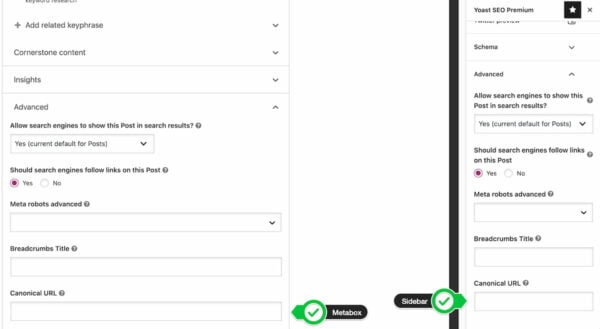Duplicate content issues arise when search engines encounter multiple URLs with the same or very similar content. As a result, search engines don’t know which URLs to rank higher, resulting in lower rankings.
In the previous section, we’ve already addressed keyword cannibalization caused by writing about the same topic too often. But most of the time, the root of duplicate content is technical and can happen without you even noticing. For instance, some content management systems add session IDs or parameters for tracking URLs. Or, you might have indexed www and non-www versions of a particular page. Accordingly, you’ll have multiple URLs showing the same content.
Besides the technical reasons, your articles can get scraped or copied by other parties. So, there are many causes for duplicate content, as you can read in this extensive article on duplicate content.
If you want to find out if your site suffers from duplicate content, you can use these duplicate content tools to check your site for issues.
2.5.2. Solutions for duplicate content
How you should solve your duplicate content issue depends on the cause of the problem. In general, there are three ways to go about this — in order of preference:
- Whenever possible, avoid creating duplicate content. If your system creates session IDs in the URL, try to turn that off.
- Can’t avoid creating them? Redirect those URLs with a 301 to the original version.
- Need to keep a duplicate article? Make sure to add a canonical link to the original version in the
<head>section of the duplicate article. It will show search engines what the original version of the article is to pass the link juice on to the original version. In the next section, you’ll find out how easy this is with Yoast SEO.
If you want to learn how to solve specific duplicate content issues, check out Joost’s ultimate guide on causes and solutions for duplicate content.
2.5.3. Set a canonical link with Yoast SEO
With Yoast SEO, adding a canonical link to a post or page is easy. No need for a developer! Go to the Advanced tab in the Yoast SEO meta box below your post or page or the sidebar of the block editor. There, you’ll find the Canonical URL field where you can enter the URL of the original article — the one you want to point search engines to:

Yoast SEO will set a self-referencing canonical for you if you don’t set a canonical. This means that the article will point to itself. Learn why self-referencing canonicals are beneficial for SEO.

No comments:
Post a Comment